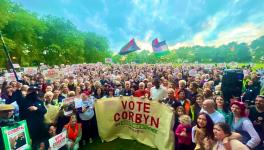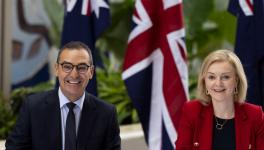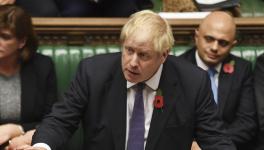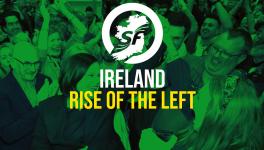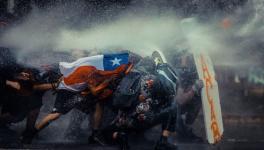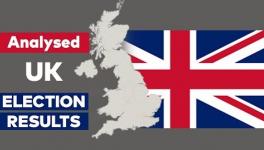Amid EU-UK Sparring, Brexit’s Irish Impasse Remains Unresolved
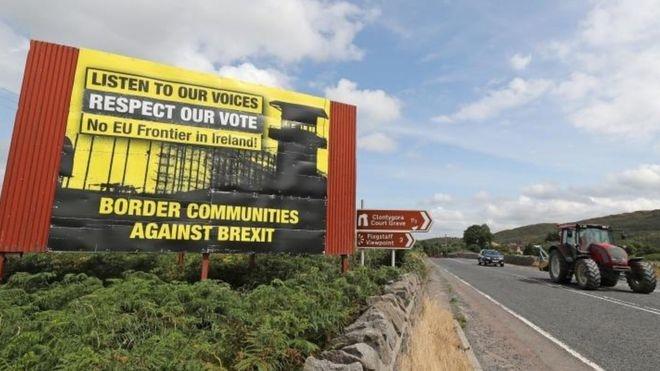
The EU’s chief Brexit negotiator, Michel Barnier, has rejected a proposal made by the UK regarding customs collection, which, if accepted, could have resolved the problem of a customs border arising after Brexit between the Republic of Ireland and Northern Ireland – a possibility that threatens both the countries’ economies and the peace achieved after decades of fighting.
With the interests of both the Republic of Ireland and Northern Ireland left at the mercy of the negotiating powers, rumblings of an Irish unification, which would have seemed far-fetched prior to Brexit, have been sounding on the island in both the countries.
The most contentious issue in the Brexit negotiations over the last year has been the future of the relationship between Republic of Ireland, which remains part of the EU, and Northern Ireland, constitutionally a part of the UK.
Also Read: Ireland Referendum: Big Victory, Many Intersections
Having first played hard ball, insisting that ‘Brexit means Brexit’ and that there could be no compromise on leaving the EU’s single market and customs union, British negotiators seemed to have been caught by surprise by the fact that this would mean reinstating the border between Northern Ireland and the Republic Ireland, reopening old wounds left behind by decades of violence the Irish, in one their classic understatements, called ‘the Troubles’.
The three decades of armed conflict between the Nationalists – mostly Catholics – who wanted to unite the Northern Ireland with Republic, and the unionists, who intended to stay a part of the UK and regarded themselves as British, left over 3,500 dead and another 47,500 injured. The Troubles came to an end in 1998 with the Belfast Good Friday agreement.
The agreement had a provision for Northern Ireland to accede to the Republic of Ireland if such should be the popular mandate determined by a referendum in the region. This was aimed at satisfying the Republicans by keeping open the possibility of unification in the future. At the same time, the British loyalists accepted it too as they were convinced that Northern Ireland, with its Protestant majority who have historically identified with England, would never provide such a popular mandate.
During the conflict, the border between Northern Ireland and the Republic held great symbolic significance and was also marked by checkposts and heavy security. After the signing of the agreement, and both regions came under the EU, the border restrictions disappeared in accordance with the EU’s policy of free trade and free movement of people within the union. Since then, the political tensions have also largely eased, marred by only occasional instances of violence.
The economies of the two regions have also developed a strong dependency due to the movement of goods and people across the border. Without walls and checkposts, the border between the two is practically invisible, with only subtle indicators, such as a change in color of traffic signs and change in speed limits from kilometers in the Republic of Ireland to miles in Northern Ireland, informing a traveler that she has crossed the border.
A formidable border
This border is crossed by 23,000 to 30,000 people on a daily basis, many of who commute to work. Apart from this labor market integration, the existence of the two countries in a single market within a common customs border has resulted in development of value chains in manufacturing that extend across the border.
For example, a third of the cow milk generated in Northern Ireland crosses the border to the Republic for being processed into butter, cheese and other products. “Dairy farmers would have to go out of business as a consequence of their milk not being processed,” the House of Commons was warned by last year by Mike Johnston, the Northern Ireland director for Dairy UK.
Diageo, the producer of Guinness beer and Bailey’s Irish Cream, many of whose raw materials cross the border as many as three times before the final bottled product is ready for export, also had expressed concern that restrictions at the border would force the company to increase the cost of its liquor.
It is not the possibility of installation of a physical border, which all sides have vowed to avoid but the variation in customs rules and regulatory standards that businesses are worried about due to the additional cost involved in crossing the customs border.
In a text titled Commitments to Northern Ireland, Prime Minister Theresa May had declared in December last year that her government, “will fully protect and maintain Northern Ireland’s position within the single market of the United Kingdom.. there will be no new borders within the United Kingdom of Great Britain and Northern Ireland.. the whole of the United Kingdom, including Northern Ireland, will leave the EU customs union and the EU single market.”
Also Watch: Saudi Prince Visits UK as Britain Boosts Murderous Arms Sales
With both Republic of Ireland and Northern Ireland – where the majority of the referendum votes were in favor of staying in EU – making it clear that such a border will not be acceptable, Theresa May reassured the latter that there will be no physical border erected between the two countries and that the entire island of Ireland will remain under a Common Travel Area.
This assurance, however, made no contribution towards ensuring that a customs border was not raised between the two countries. In absence of an agreement over the issue between the UK and EU, such a border is mandated by EU laws in order to protect the common market. The WTO rules, under whose purview UK will fall after Brexit in absence of a deal, also mandates a customs border.
“The WTO is really unyielding on this point that for international trade to work, every state needs to essentially police its borders from a customs point of view.. It’s non-negotiable,” Edward Burke, assistant professor in international relations at the University of Nottingham, was quoted to have said by the Atlantic.
The EU had proposed to resolve the Irish impasse by an arrangement where Northern Ireland remained in the EU single market and the customs union, which would have required the customs border to be drawn in the Irish sea between England and Ireland.
However, Theresa May rejected this proposal on the grounds that no customs borders within the UK could be conceded to. Her government currently survives with the support of 10 MPs from Northern Ireland’s Democratic Unionist Party (DUP), whose members have been fiercely resistant to any demarcation between them and Britain.
A spree of proposals
The EU then hinted that the other way to avoid a customs border would be to agree on an exit plan under which the whole of the UK would remain inside the customs border. In a white paper published by the UK government this month, the UK proposed a free trade of goods with no tariffs, as a part of which it sought an agreement on a common rulebook, including for agricultural products, in order to facilitate “frictionless trade at the border”.
This proposal, which effectively creates a single market for agricultural products, has come under severe criticism from the pro-brexiters within the Conservative party, who are insisting on a “hard brexit”.
Addressing the problem of customs, the white paper proposed, “phased introduction of a new Facilitated Customs Arrangement that would remove the need for customs checks and controls between the UK and the EU as if they were a combined customs territory”. The proposed customs arrangement was elaborated further in another white paper, according to which, the UK would track goods headed to EU via the country, collect tariffs its behalf and hand them over to the latter.
This was the proposal that was rejected by the EU recently. “The EU cannot and the EU will not delegate the application of its customs policy and rules and VAT and excise duty collection to a non-member who would not be subject to the EU’s governance structures,” the EU’s chief negotiator, Michel Barnier said.
Get the latest reports & analysis with people's perspective on Protests, movements & deep analytical videos, discussions of the current affairs in your Telegram app. Subscribe to NewsClick's Telegram channel & get Real-Time updates on stories, as they get published on our website.









